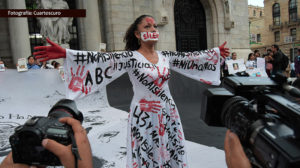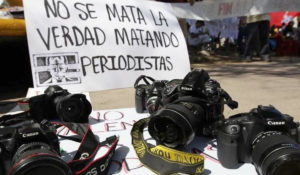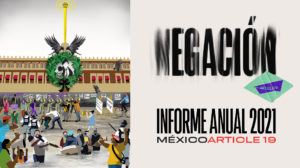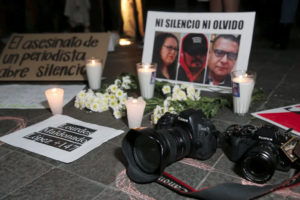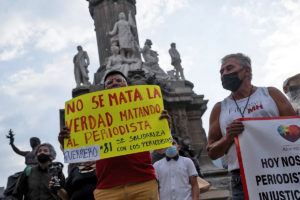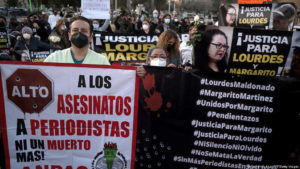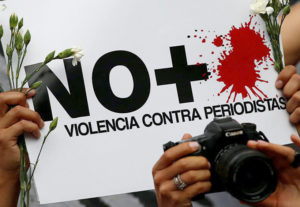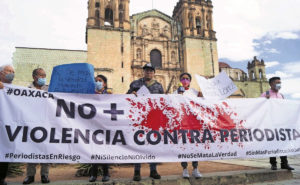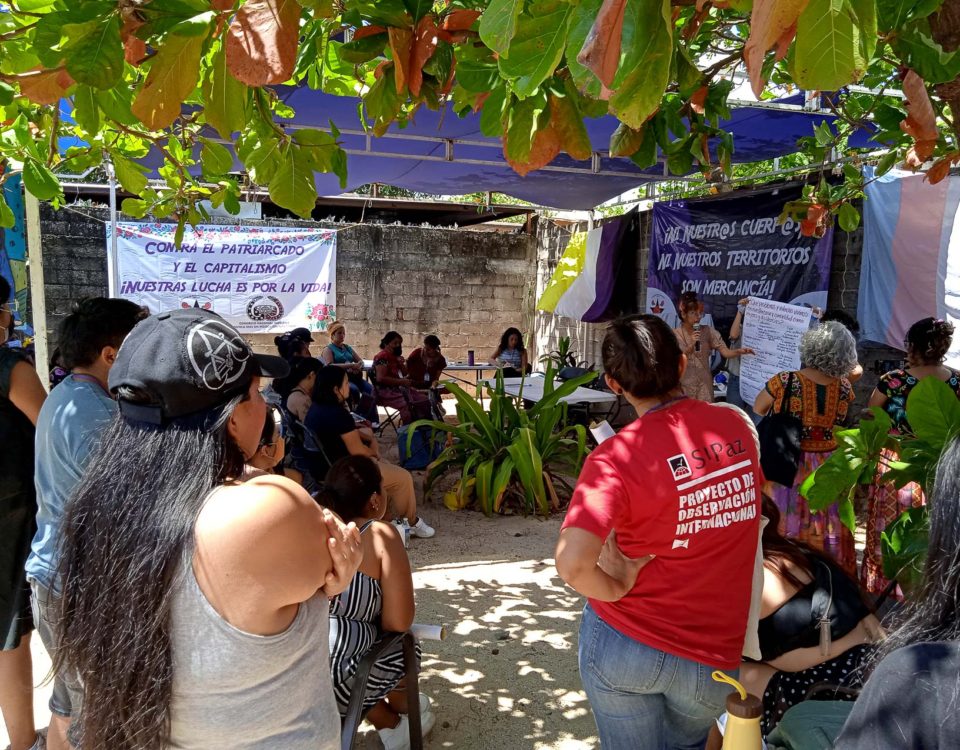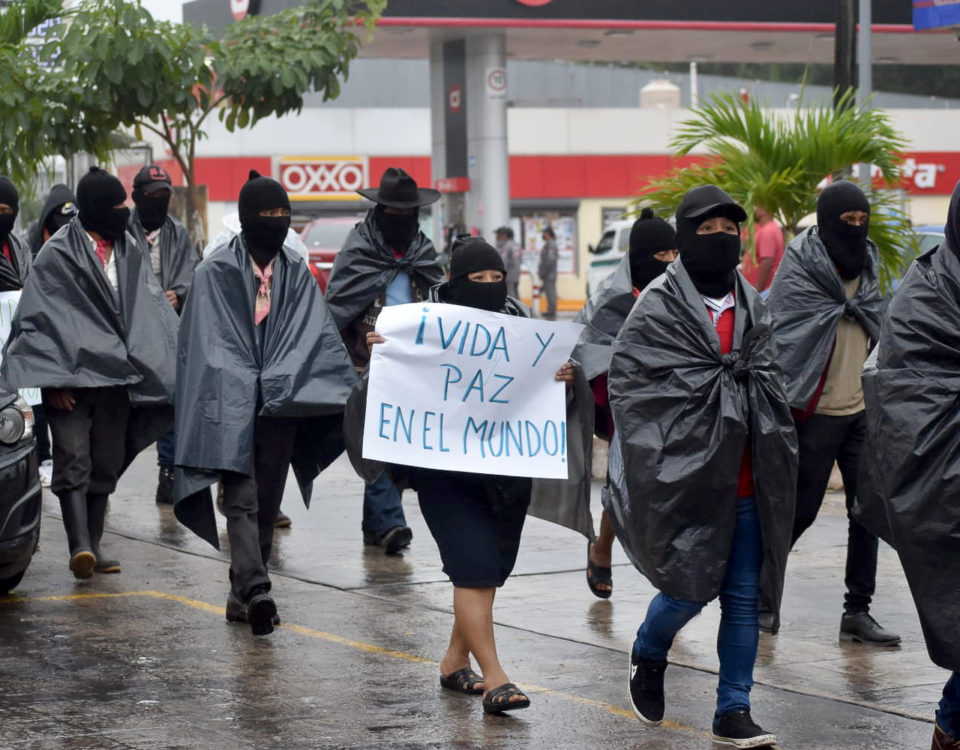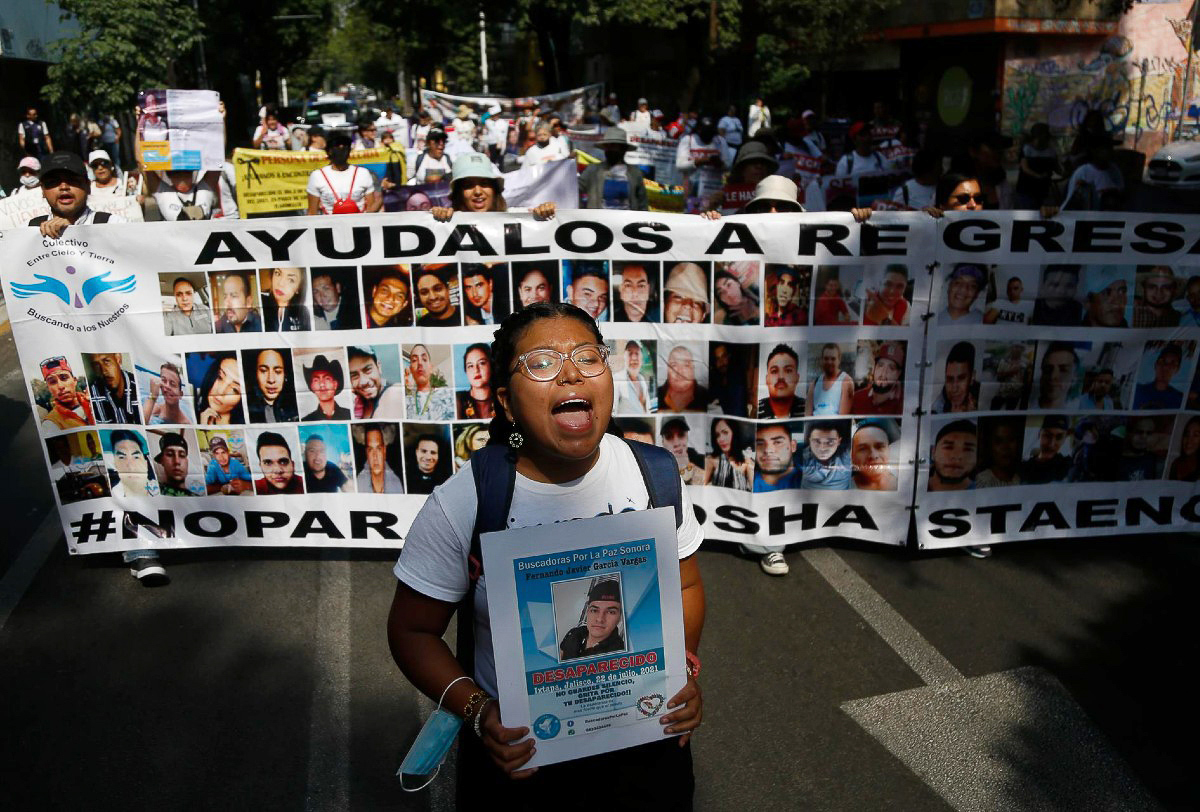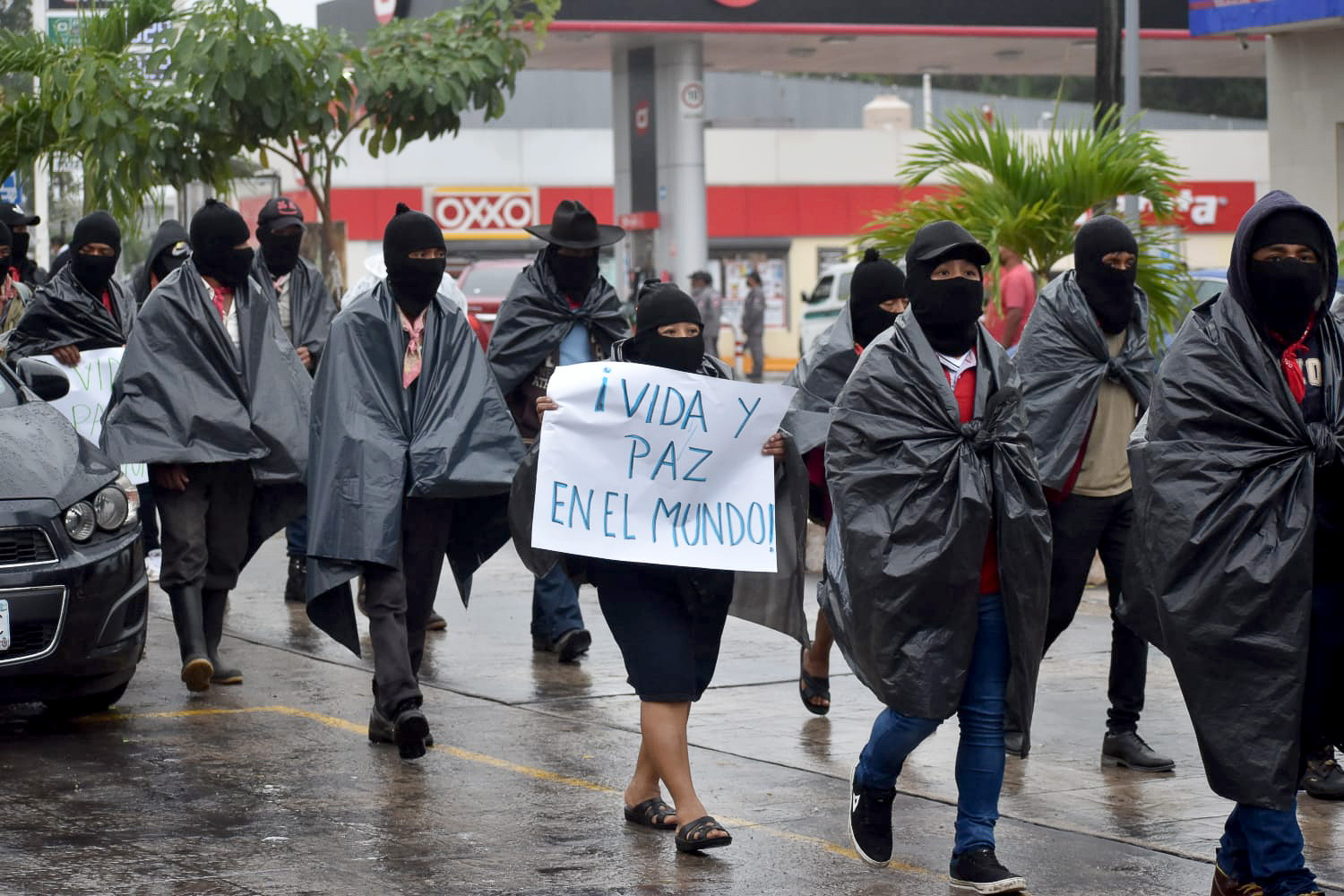“#NosEstanMatando (#TheyAreKillingUs) You don’t kill the truth by killing journalists!”
T he murders of the journalists Yesenia Mollinedo Falconi and Sheila Johana Garcia Olvera, which occurred on May 9th, 2022 in Veracruz, as well as that of Luis Enrique Ramirez Ramos, a journalist and political analyst who was kidnapped and murdered just four days earlier in the north of the country, brought the toll of communicators executed in Mexico to 11 so far in 2022.
The delegation of the European Union (EU) and the embassies of its member states in Mexico, as well as those of Norway and Switzerland, condemned these murders: “The events that occurred in less than a week reflect once again the very serious degree of violence and intimidation faced by many journalists in Mexico”, the diplomatic representatives pointed out.
Human Rights Watch (HRW) said, for its part, that it is urgent to implement measures to strengthen the federal protection mechanism, to stop the harassment of journalists who criticize the government, and to put an end to the “almost absolute” impunity for these crimes. Tyler Mattriace, researcher for the Americas at HRW, assured that “this year is on the way to becoming the deadliest in history for journalists in Mexico” and that “President Lopez Obrador has not only failed to address violence against the press, but also continues to use his morning conferences to harass and intimidate journalists.” The “theater” of public order represented by the messages of “Zero impunity” “does not guarantee that there will be justice for the murders”, the organization said.
Mexico, one of the deadliest countries in the world
Several sources emphasize it: Mexico is one of the most dangerous countries in the world for journalists. The country remains in 143rd place out of 180 in the World Press Freedom Index (2021), unchanged from the previous year. It has certainly improved its ranking in recent years from 153rd place in 2013. But Mexico’s score, according to Reporters Without Borders (RSF), increased to 46.71 in 2021 (45.45 in 2020), which implies a worsening of the situation of freedom of expression due to an increase in attacks and a more hostile environment for journalists.
The description of the situation in the country published on the organization’s page warns: “Homeland of the drug cartels, Mexico continues to be one of the deadliest countries in the world for the media. Journalists (…) suffer from intimidation, attacks, they can be killed in cold blood. Numerous journalists have disappeared in the country; many others have been forced into exile to be safe.”
Coverage of corruption and politics, the most dangerous topics
In 2021, the issues behind the attacks against journalists were corruption and politics with 285 cases (44.25% of the total), according to the report of the same year, “Denial”, from Article 19. Coverage of issues related to security and justice, known colloquially as “red note” in Mexico, is in second place with 155 cases (24% of the total). Covering issues such as human rights, protests, social movements, and defense of land and territory represent third, fourth, and fifth place.
“What is happening in Mexico is terrifying, it is once again the country with the most deaths in a year, although it is a country at peace in theory”, explained the secretary general of Reporters Without Borders, Christophe Deloire, coinciding with the publication of its annual balance 2021. “Journalists who investigate drug trafficking, the underworld of a corrupt political class, are killed more often than in other countries. It’s sinister”, he added.
According to Article 19, reporting on security matters increases the risk of being a victim of organized crime (33 of the 42 attacks were perpetrated by these groups) and civil security forces (52 of 110). In this sense, journalists who deal with these issues are more likely to suffer death threats (15 out of 36 cases), arbitrary arrests and deprivation of liberty (13 out of 33 cases) and to be killed, since four of the seven journalists killed in 2021 covered security and justice issues. Between attacks and impacts, it is not surprising that the fear of being attacked causes, above all, journalists who cover security and justice issues to self-censor themselves to avoid greater risk.
Impunity and rise in violence
Despite some recent progress, Mexico continues to face a serious problem of impunity. RSF considers that the collusion of the authorities and politicians with organized crime and national and transnational companies seriously threatens the security of news players and hinders the operation of justice in the country at all levels. When journalists investigate issues that are bothersome to the government or related to organized crime – especially at the local level – they can be threatened and intimidated, and even killed, the organization says.
The coming to power of President Andres Manuel Lopez Obrador (AMLO) in December 2018 does not seem to have managed to stop either the spiral of violence against journalists or impunity, impunity (ranging between 91 and 98% according to sources), being a factor that precisely nourishes this spiral.
Article 19 documents that, in 2021, in Mexico, an attack against the press was recorded every 14 hours, with a total of 644 attacks recorded throughout the year. During 2021 seven journalists were killed. In the three years of the government of President Andres Manuel López Obrador, 1,945 attacks against the press were added, among which are 30 murders of journalists and two disappearances. This represents “almost 85% more attacks against the press than the first three years of the previous president, marking the most violent period against the press on record”, the 2021 Article 19 report indicates.
Denial and invisibility
The same report highlights that in 2021 “the tendency to deny and make problems related to human rights disappear from public discourse was consolidated.” The Mexican president has minimized the murders of journalists, affirming that they were only an insignificant percentage of the murders that Mexico experiences every day, which, although true, is of no consolation.
It is important to underline that, in 2021, public officials were the main aggressor against journalists and the media, as has been the case since 2009, the year in which Article 19 began the registry of attacks against the press in Mexico. Thus, of the 644 attacks in 2021, the Mexican State was involved in at least 274 of them (42.55%), through public officials, civil security forces (police, guards, etc.) and armed forces (National Guard, Army, Navy, etc.). In other words, the Mexican authorities are directly linked to two out of every five attacks against the press.
Stigmatization and criminalization
On February 1st, 2022, the Inter-American Commission on Human Rights (IACHR) called on the Mexican government to recognize the crisis of violence that journalism is going through in Mexico. Likewise, it asked to suspend the spot “Who is Who in Lies”, which it described as a “spot totally foreign to the democratic standards of freedom of expression” that “makes the firm messages that should be heard in support of journalistic work and rejection of violence against journalists seem strange.” The Mexican president denied that there was a relationship between the increase in violence against journalists and what was said about them in his conferences, which he described as “incorrect speculation.” AMLO declared: “Very few journalists are fulfilling the noble job of reporting.” Article 19 also documented that, in 2021, during the president’s morning conferences “on at least 71 occasions, an average of almost six times a month, the head of the Federal Executive himself or other members of the government reviled the press.” According to the same source, 40% of the president’s verifiable statements were not true: 34% mixed true information with erroneous information and 17% were totally false. In this sense, AMLO contributes to a large extent to a cycle of false information and stigmatization, according to the “Denial” report.
On another note, the report indicates that there is an information gap in Mexico both due to the lack of internet coverage, especially in rural regions, and by monopolizing the media when 33% of the total expenditure on official advertising is invested in only three media (La Jornada, Televisa and TV Azteca) which reduces the diversity of options and opinions by privileging a few.
Demands for improvements
So far in 2022, there have been several demonstrations across the country to demand justice and an end to violence against journalists. Due to its concern about the increase in such violence and the high level of impunity in Mexico, the European Parliament asked the Mexican authorities in March for “measures to guarantee the protection and the creation of a safe environment for journalists and human rights defenders, tackling widespread corruption and shortcomings in judicial systems, which lead to high rates of impunity for these crimes.” In addition, it mentioned that “Parliament observes with concern the harsh and systematic criticism formulated by the highest authorities of the Mexican Government against journalists and their work.” The MEPs warned that “the rhetoric of abuse and stigmatization generates an environment of incessant agitation against independent journalists” and called on the Mexican government “to refrain from any communication that could stigmatize journalists and media workers.”
In response, the Mexican president declared: “Enough of corruption, lies and hypocrisy. It is unfortunate that they join like sheep in the reactionary and coup strategy of the corrupt group that opposes the Fourth Transformation.” It is far from the first time that the President’s speech refers to the supposed “conservative forces” in the country that, he considers, want to attack his government and represent a threat to democracy. In these groups he has also included civil society groups, such as feminist collectives, human rights defenders, among others. In addition, the president stated in his statement to the European Parliament: “Here no one is repressed, freedom of expression and the work of journalists are respected. The State does not violate human rights as happened in previous governments, when you, by the way, kept an complicit silence.”
In this way, he denied the violations of freedom of expression and human rights by the Mexican State, in strong contrast to reports that national and international organizations have been publishing on this subject. The reactions to the Presidency’s statement were immediate, several media outlets, officials, academics and society in general lamented the lack of diplomacy and professionalism in the writing, many even thought it was a joke and some even apologized to the European Parliament for the speech that President Andres Manuel Lopez Obrador confirmed he had written.
A Protection Mechanism: urgent and necessary reform
“Mexico has official organizations for the protection of journalists, either with active measures, or through a special Prosecutor’s Office for crimes against them. But in reality it is just a very inefficient large bureaucracy (…) that gets used to this situation and does little to avoid it”, lamented the general secretary of RSG, Chistophe Deloire. He considered the situation of the press in the country a “hecatomb” and asked the authorities for radical measures to put an end to it.
Since 2012, Mexico has approved the Law for the Protection of Human Rights Defenders and Journalists and established a federal Protection Mechanism. This Mechanism has sought to specify responses to the lack of attention on the part of the authorities, including the omissions of the prosecutor’s offices when issuing precautionary measures in situations of risk. However, as has already been mentioned, the attacks against journalists and human rights defenders continued and increased. From 2017 to 2021, seven journalists who had measures from the federal Mechanism were murdered, according to Article 19. Between 2018 and 2021 of the 540 journalists incorporated into the Federal Protection Mechanism for human rights defenders and journalists, 341 suffered some type of aggression despite this, according to the Ministry of the Interior itself.
In 2020, the Undersecretary for Human Rights, Population, and Migration, Alejandro Encinas Rodriguez, stated that “the Mechanism does not have within its powers to directly implement crime prevention actions, it does not investigate crimes, nor is it its responsibility to combat impunity. Nor does it have powers to eradicate violence in the states.” This same year, CSO Space called for the approval of a reform of the Law, and at the beginning of 2022 regional dialogues began to promote a new protection law. Encinas stressed that special emphasis will be placed “on the definition of competencies because in many cases the authorities themselves are the cause of the attacks. (…) it must be a State policy, involving the authorities of the three levels of government.” However, journalists and activists expressed doubts about the law reform initiative, particularly whether it will be able to deliver on promises to prevent and investigate crimes.
The workshops that have been held in various parts of the country can be an opportunity to fine-tune diagnoses, review needs, develop a public policy of comprehensive protection to guarantee the exercise of freedom of expression by journalists, as well as to combat the impunity for attacks against the press and guarantee the right to the truth, among other aspects. Acknowledging the existence of the problem is an essential first step.

